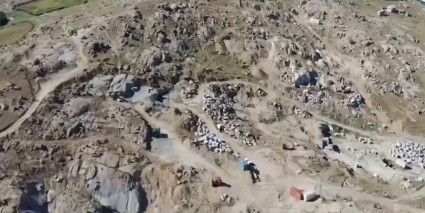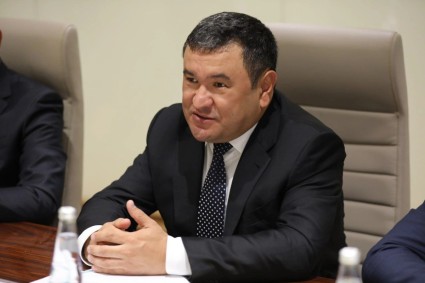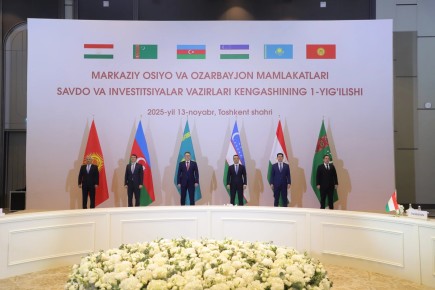On September 13, the Cabinet of Ministers issued a resolution on measures to provide financial support to producers of raw cotton.
As the resolution reads, for the 2024 harvest, the initial futures prices for raw cotton are about 6.8 million soums per 1 ton, based on futures quotes for cotton fiber on the world market. In this regard, the initial futures price per ton of raw materials of the first grade of the second class of the 2024 harvest on the commodity exchange was announced at 7.8 million soums (at the beginning of the year).
In the context of a sharp decline in cotton prices on the world market, the government has taken the following measures to support producers and clusters:
- 1 million soums will be provided in a subsidy in the amount from the State Fund for Support of Agriculture under the Ministry of Economy and Finance for each ton of raw cotton sold through exchange trading (based on an electronic invoice). The exception is raw cotton produced by cotton-textile enterprises and seed cotton;
- addendum agreements will be entered into between cotton producers and cotton processing enterprises to contracts concluded at exchange trading for 2024, taking into account that the price of raw cotton should not be lower than 6.8 million soums;
- in addition to futures contracts for the 2024 harvest, the initial price of raw cotton per ton is set at no less than 6.8 million soums;
- in 2024, the fund will cover 20% of the cost of services for collecting each ton of cotton by cotton pickers in all regions, but not more than 250 thousand soums.
The provided subsidy is primarily used to pay off the debt of cotton producers on soft loans received for the 2024 harvest. These funds will be used to pay off the debt of commercial banks to the fund.
After paying off the debt on soft loans, subsidies will be used to pay off taxes and other mandatory payments, and the remaining funds will be transferred to the main account of cotton producers. That is, farmers will not be able to use these funds directly.
The funds provided for the payment of subsidies under this resolution will not be subject to a commission for banking services, and will not be considered income (turnover) for tax purposes.
The Ministry of Economy and Finance will provide the State Support Fund for Agriculture with an interest-free budget loan of up to 3.5 trillion soums for up to 5 years to cover additional expenses arising from the implementation of the resolution.
The money of this fund may be used to provide soft loans to farms that have entered into contracts (futures, spot or temporary storage) with textile clusters that are undergoing the “recovery” process within the framework of the government resolution of July 25, 2024 (No. 452), as well as to farmers growing cotton raw materials on their own land plots, to finance the costs of harvesting.
Soft loans will be provided for 10 months at a rate of 10% per annum (2% bank margin) with a 3-month grace period and equal shares during the remaining 7 months in the amount of 20% of the cost of cotton raw materials accepted through electronic scales.
The State Financial Control Inspectorate must establish control over the correctness of calculations and the targeted spending of provided subsidies.
The government has prohibited the intervention of state authorities, including local executive bodies, in the process of forming prices for cotton raw materials.
Revision of contract terms to the detriment of farmers?
Due to the "fall in cotton prices on the world market", the terms of futures contracts concluded in winter are being revised to the detriment of farmers, and clusters are receiving financial support from the budget.
Cotton from Uzbekistan has not been exported to foreign markets for several years.
Today, cotton prices in Uzbekistan are indirectly influenced by information about prices on the world cotton market.
In his opinion, fluctuations in raw cotton prices should be perceived as a normal and useful situation.
The government resolution was perceived negatively by farmers, which is evident from their opinions on social networks and various publications. The reason is that the document, which appeared on the eve of the harvest season, "seemed to have fallen from the roof" and is aimed "not at scattered and defenseless farmers, but rather was adopted in favor of clusters that have joined the local and central authorities."
The government should take into account the opinion of farmers, who are the "largest employers and producers at the grassroots level", but this "decision was made unilaterally".
It should be noted that the document was not published for public discussion, and farmers in specialized groups were puzzled by the government resolution. They have questions regarding the wording of the document.
Clusters interpret them in their favor, demanding that the winter contract be renegotiated with a price reduction of 1,000 soums per 1 kg. That is, if a farmer and a cluster entered into a futures contract in February at a price of 7,600 to 8,500 soums (in Surkhandarya and Kashkadarya, prices are higher due to the quality of the cotton), then now the price will be 7,500 soums, and 1,000 soums will be issued as a subsidy, but it will go toward paying off loans and other payments.
In addition, there are reports of a price limit for the sale of excess cotton outside the futures contract.
Farmers also report delays in payments from clusters that accept cotton. Because of this, farms do not have the funds to attract cotton pickers to the fields and pay them. Because of this, in some regions, hired workers refuse to pick cotton at a low price (1,300-1,500 soums per 1 kg, last year they paid more).
Last year, cotton and textile clusters had to conclude futures contracts with farms for growing raw cotton for the next year's harvest by October 1 (for the 2023 harvest - by February 1, 2023).
In July, the President of Uzbekistan announced a new deferment of the loan repayment period for cotton clusters.
In August, textile enterprises were provided with soft loans for the purchase of raw cotton. The loan amount was up to 20% of the cost of cotton, at 10% per annum for a period of up to 10 months.











